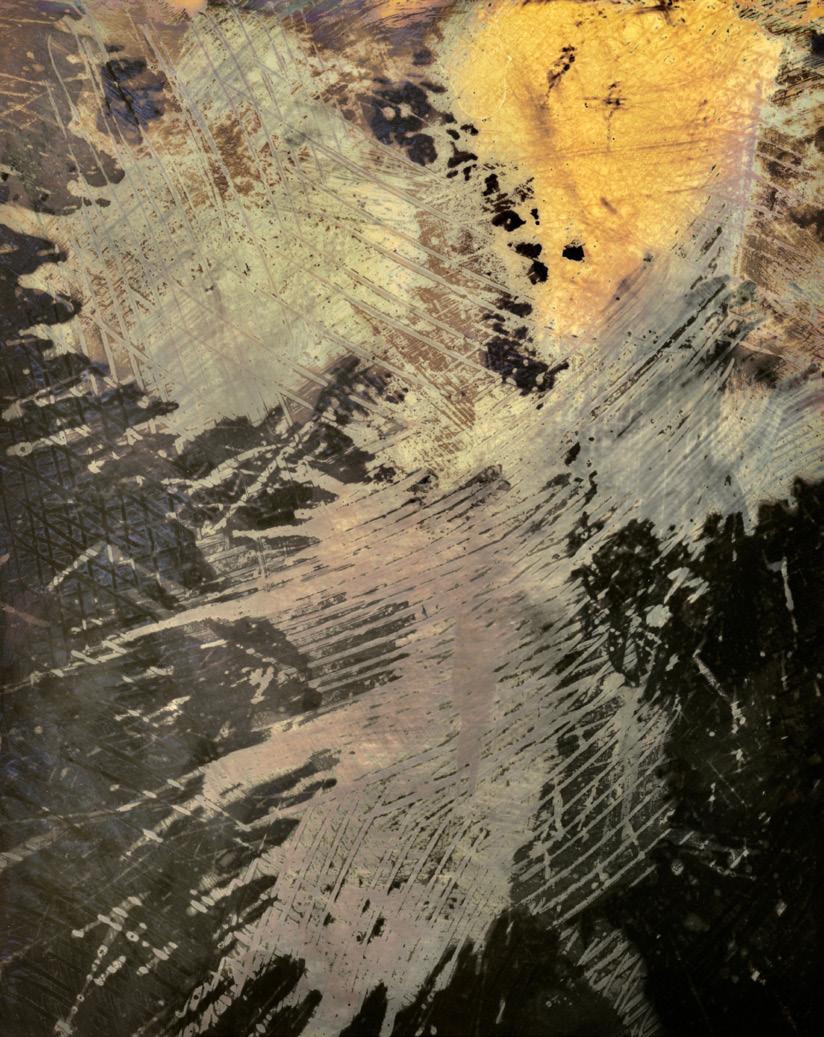
2 minute read
THESIS STATEMENT
As a senior, now in a position to reflect on all the art that I have produced over the years, a pattern becomes apparent. As seen in my junior thesis project, in which I attempted to perfectly draw from life different mechanical items, I am a stickler for control. My process can be very slow and tedious, often yielding what seems to me to be not nearly enough output for all of the hard-wrought input. My senior thesis now takes a direction in which I rarely go: it centers around the idea of art truly being a journey all its own, and of leaving things up to chance. Pencils and plans were largely forgone this time, with wood cleaner, shaving cream, baking soda, dish soap, and light serving as the facilitators of my medium. Making chemigrams allowed me to explore a process entirely new to me and to create images I would have never otherwise, introducing me to a different way to approach the creation of art.
Like most ideas I end up sitting with for weeks on end, I stumbled upon chemigrams in a roundabout way: searching for alternative methods of photography that I intended to incorporate into another project entirely. Chemigrams intrigued me the second I saw examples of them, as they largely didn’t focus on recreating any actual “image”. They were conceptual, unpredictable, and had something unplaceable about them. While this was my first venture into making abstract art, I have always been drawn in by the strange recognition of entirely foreign images that it can invoke.
Advertisement
Generally made from exposing photographic paper to a slew of household items to then dip in developer and fixer, the results of my work were dependent on the factors of light and time. What I found that I enjoyed so much about chemigrams was their ability to look vastly different depending on the methods used to make them—even then, I found that attempting to recreate the effects that appeared on one image on another to be nearly impossible. This was far from being a negative, though, as each new iteration revealed something unique and interesting that I would then explore further. Some manifested into visions of far-away clusters of stardust, turning into nebulas and comets trailed by tails of light; some appeared as the dregs of a longforgotten vat of industrial chemicals, pure pollution changed into something beautiful only from the passing of time.
While striving for perfection is often seen as a positive, I have found that it causes just about as much harm as it does good. Perfectionism can be the driving force behind art that is either stunning or starchy, but moving past such a mindset can end up creating work that expresses a special sort of freedom and naturally bends beyond the imagination. There is much delight to be found in making chemigrams—in waiting to see how the developer fades new colors onto the image and how bright spots of fixer show through layers of pink and gray. As opposed to fighting against randomness, I worked with it, and created pieces that I hope will cause people to stop and consider the beauty that can be found in transience.







